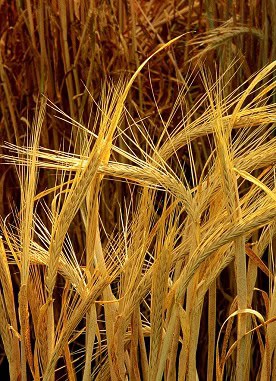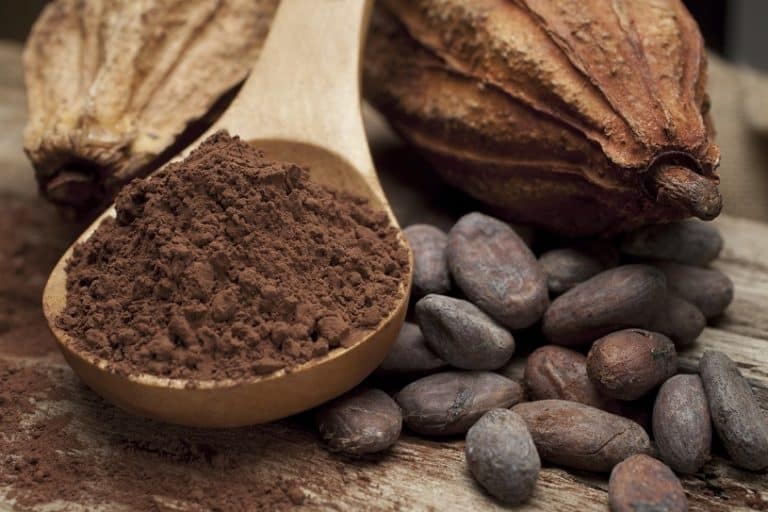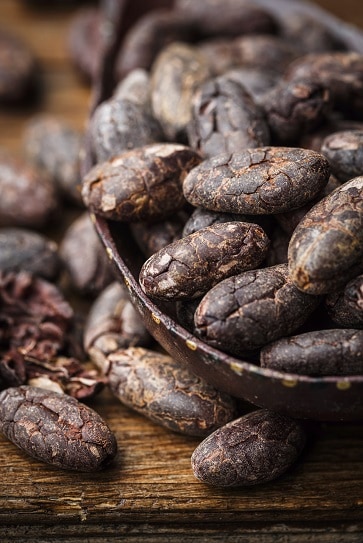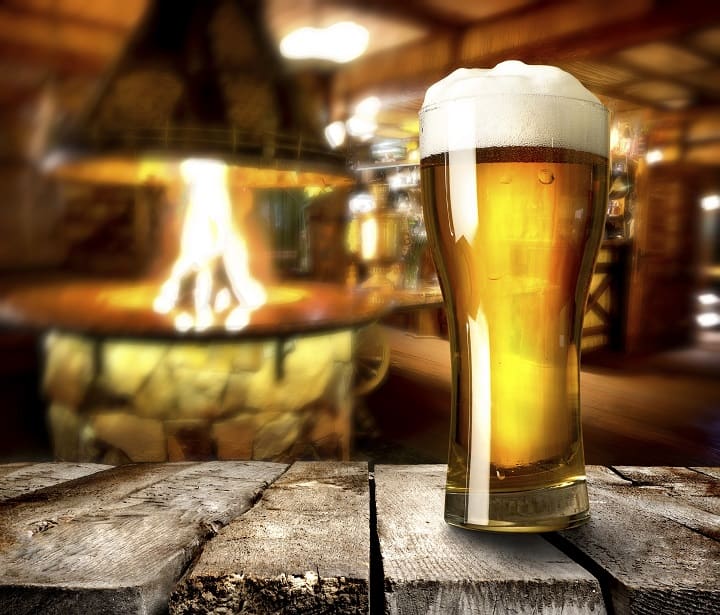 You’re about to make an epic switch to an acne-friendly diet. You’ve outlawed donuts and soybean oil, and you have dozens of delicious yet all natural recipes lined up.
You’re about to make an epic switch to an acne-friendly diet. You’ve outlawed donuts and soybean oil, and you have dozens of delicious yet all natural recipes lined up.
You’re happy that your new diet is much less punishing (and tastier) than you expected. However, there’s one menace that could scupper everything. According to many internet articles, that menace is mycotoxins.
These completely natural toxins are found in several classic acne-friendly treats like chocolate and coffee. Worse, they’re invisible. You can’t see them, you can’t taste them, and you definitely can’t reason with them.
This phantom nature is what makes the panic about them so widespread, but they’re not as deadly as you may have heard. Here are the 10 basic mycotoxin facts an acne sufferer should know:
One – they’re microscopic mould toxins
Mycotoxins, as the worst-sounding concise summary possible, are offensive weapons produced by moulds to destroy their arch-microbial enemy, bacteria. Countless moulds have their own mycotoxins, with individual forms including T2 toxins, zearalenones, and fumonisins. Some especially feared moulds in the mycotoxin arena are the Aspergillus species, like A. flavus.
Mycotoxin are why hanging out with your friends in a damp cellar entrance you found in the woods might give you a respiratory infection. But more importantly, they’re common in foods, with coffee, cocoa, peanuts, beer and chili getting the most attention.
Mycotoxins distort the shape of bacteria cells, and cause cytoplasm leakage in the cell membrane. They’re not intended to target humans, but our health is collateral damage in their antibacterial wars. That makes them very different to say, glycoalkaloids in tomatoes (a minor downside of them), which exist specifically to ward off animals like deer trying to eat them.
Joint aches, muscles pains, and muscle spasms are all classic signs of accidental mycotoxin ingestion. So are acne outbreaks, and that’s why people are finding their favourite beverage to suddenly be imprisoned behind a wall of doubt.
Two – the risks are overstated
 Luckily, the dangers of mycotoxins are massively overstated. They’re a threat to your skin, no doubt, but the most paranoid articles recommend binning all coffee in your cupboard. Some recommend buying brands which are double lab certified as mycotoxin free, both at the farm stage and shelf stage. In reality, human beings are well adapted to eating small amounts of mycotoxins. Some scientists estimate that 99% of humans have ochratoxin A in their bloodstream.
Luckily, the dangers of mycotoxins are massively overstated. They’re a threat to your skin, no doubt, but the most paranoid articles recommend binning all coffee in your cupboard. Some recommend buying brands which are double lab certified as mycotoxin free, both at the farm stage and shelf stage. In reality, human beings are well adapted to eating small amounts of mycotoxins. Some scientists estimate that 99% of humans have ochratoxin A in their bloodstream.
In farms, they take special measures to prevent mould overgrowth, like raking drying coffee beans and never storing crops in damp wooden barrels. In nature though, those conditions would be much more common. As cavemen, we were at the mercy of our weather and climate. Moulds are much more ancient than humanity, so if we hadn’t evolved biological defences against the mycotoxins they make, our species would be long gone. It would probably be a race of friendly giant rats sitting in front of the 6 o’clock news instead.
Speaking of which, those measures taken by farms are another reason why levels are usually minimal. There’s many cash-hungry or incompetent farmers too, but one study found that drinking 4 coffee cups daily contributed only 2% of the mycotoxin safe limit.
Three – they can cause acne in two circumstances
The first situation where mycotoxins trigger acne is bad luck – if all your favourite brands happen to be contaminated. Like many people, you might have stuck with your tried and tested brands for years; they’re such an ingrained part of your daily routine that you can barely remember the name. Maybe you were on a cost-cutting campaign and found a super cheap Nigerian coffee brand (a top mycotoxin country) in a bargain basement megastore. Maybe your dark chocolate brand is so faded and musty that it looks like a 19th century Antarctic ration which was recently rediscovered.
Accidentally having a high mycotoxin intake won’t cause acne singlehandledly, but it could crank things up a notch.
The second situation is the nebulous, unpredictable one: rogue sensitivities. These undoubtedly exist, but nobody is certain why. Maybe it’s living in a damp, mouldy apartment as a child, making your immune system much more attuned to these invisible enemies. Genetics is a possibility, an inbuilt weakness in detoxifying mycotoxins. Regardless, the vast archives of internet acne testimonials make it clear that mycotoxin sensitivity does exist.
Four – their main acne dangers

Forgetting the size of the threat for a second, the main acne power these microscopic toxins have is cranking up immune system inflammation.
The library of studies is deep, although how they work is another question. Mycotoxins could easily manipulate immune system genes, bind to chemicals like histamine and make them more aggressive – an obscure power we haven’t pinpointed. The likely bet is that your immune system identifies them as an inherent threat and cranks up its entire inflammatory response.
Chronic inflammation is the root cause of acne, not poor hygiene, and here are some studies on mycotoxins:
ONE: in human nasal cells, ochratoxin A triggered a huge increase in the immune system chemicals interleukin-6 and IL-8 (study). The scientists’ verdict: “a strong, pro-inflammatory effect“.
TWO: living, breathing rats were fed a dosage of aflatoxin B1, the peanut mycotoxin. This also supplemented their body with inflammation, as IL-8, IL-1beta, and tumour necrosis factor-alpha (TNF-a) all shot up (study).
THREE: in two studies, ochratoxin A targeted NF-kappaB, the master molecule which orchestrates dozens of inflammatory chemicals. In the second study, it increased COX-2, the reddening, swelling chemical that painkillers target.
Five – their second power is antioxidant depletion
Free radical mania is not something that a clear skin maniac should look upon fondly. But that’s the mycotoxin’s second deadly skill. It increases “oxidative stress”, the imbalance between free radicals and antioxidants.
ONE: in live rats, 6 male ones, eating ochratoxin A increased oxidative stress in the kidneys significantly. It drained their glutathione supplies by 44% (study).
TWO: in some more live rats, aflatoxin B1 slashed their superoxide dismutase levels, the powerful self-manufactured antioxidant. Bloodstream free radicals rose significantly (study).
THREE: in live rats (again), which were probably lured to the lab with cheese, ochratoxin A specifically increased malondialdehyde. That’s a biomarker of lipid peroxides, AKA fat-soluble free radicals, which deplete your vitamin E (study).
This time the causes are clearer, or easier to guess. Mycotoxins must be detoxified just like cigarette smoke or pesticides, and this probably depletes glutathione, the part-time antioxidant, part-time detox agent. The damage mycotoxins inflict on cells probably generates extra chains of free radicals, which antioxidants must hoover up.
Six – chocolate is mostly safe!
 While you’ve probably consumed ochratoxins via chocolate in the past week alone, the truth is familiar: levels are too low to harm you.
While you’ve probably consumed ochratoxins via chocolate in the past week alone, the truth is familiar: levels are too low to harm you.
Compared to coffee, the problem is simple: lectins. These are another natural toxin, which are highly inflammatory in excess, forcing farms to ferment the beans to remove them. This is also performed to subtly alter the phytonutrients and create the chocolatey flavour we all know and love. However, fermentation requires moisture levels of 40-50%. This is a mould’s paradise, and they take full advantage. The common moulds in cocoa beans are Aspergillus flavus and A. tamarii, while their main mycotoxins are AB1 and cyclopiazonic acid (CPA).
Is it the official end of the chocolate industry? No, for two reasons. Firstly, another link in the flavour-enriching chain is roasting. This removes up to 40% of these invisible toxins, maybe more. Second is dehulling; the moulds much prefer the hull to the inner bean.
Some other mouldy opportunities are the wooden platforms inexperienced farmers dry the beans on, and drying the beans in overly thin layers. But the fact is that chocolate contributed just 5% of total EU ochratoxin exposure in a 2002 study. Your chocolate fantasies can still be fulfilled.
Seven – beer
 What about beer, a commonly mentioned mycotoxin source? If you vowed long ago to let nothing stand between you and your beer, then the studies look fairly positive.
What about beer, a commonly mentioned mycotoxin source? If you vowed long ago to let nothing stand between you and your beer, then the studies look fairly positive.
It’s inarguable that 99% of beer contains zearelone, 75% contains deoxynivalenol, and 93% contains ergot alkaloids. All three are potent mycotoxins with an assortment of dodgy studies. Deoxynivalenol, for example is manufactured by fusarium moulds, a much-feared form which shrivels up the kernels of wheat, barley, oats and rye alike; farmers spend all their lives trying to suppress it.
The deoxynivalenol then migrates into the beer which barley is a cornerstone ingredient of. Then it migrates to your acne, and proceeds to inflame it… or does it? It’s the same reassuring story: the levels are way below the EU’s safety limits. For example, in one study, scientists detected deoxynivalenol in 60% of 154 commercial European beers (probably before drinking them). 9% contained the mycotoxin HT-2. However, the levels were so tiny that only a heavy drinker could get within sight of the safety limit. Beer is safe, chocolate is safe – the party is just getting started.
Eight – antioxidants will protect you
Mycotoxins are safe for acne in low levels, and even better, they’re simple to cushion by consuming more antioxidants. By adding 50 grams of strawberries per day, what few free radicals were generated by the mycotoxins will be counteracted. Eat pomegranate anthocyanins and the fresh pimples, fatigue and joint pain will be much less likely.
Inflammation is still a problem, but this will wipe off a sizeable chunk of symptoms. Another advantage? Coffee and dark chocolate are rich in antioxidants themselves. Therefore, they come with an inbuilt buffer. What will win the tug of war – dark chocolate’s endless flavonoids or the aflatoxins of aspergillus? My guess is easily the flavonoids.
Meanwhile, coffee is the average American’s number 1 antioxidant source. It’s actually quite lucky that two of the classic mycotoxin foods are so antioxidant-packed. If it were melons, we’d be in trouble; they’re perfectly acne-friendly, but low on the antioxidant ladder. This is why peanuts are the worst mycotoxin food. They have no special gimmicks for clear skin, and their antioxidants are weak.
Nine – dodgy farming contaminates coffee?
 What about coffee, the glue that keeps civilisation together? The main problem is amateurish production techniques, but nowadays, international coffee bodies have a long bullet point list of guidelines for farmers to follow.
What about coffee, the glue that keeps civilisation together? The main problem is amateurish production techniques, but nowadays, international coffee bodies have a long bullet point list of guidelines for farmers to follow.
The first common failure is to leave coffee to ripen for too long. This gives aspergillus moulds longer to take over, and when they fall to the ground, they can infect healthy beans which they roll into (it’s often basic stuff). Drying is the key phase. Wet processing is infinitely better, as the beans are pushed through a machine that instantly removes the pulp. The outer pulp is the problem, as it contains the glucose the mould consumes for fuel.
In traditional sun-drying, the pulp removal is very inconsistent. It’s just left to peel off over the course of weeks. After 5 days, the mould is starved by lack of moisture, but that’s discounting mother nature: sudden rainstorms can help them come roaring back. Some farmers aren’t wise enough to anticipate this. Then you have damp, humid storage, like ancient wooden barrels. Sometimes the lorry drivers don’t understand the atmospheric conditions the coffee beans need.
All these paths lead to mycotoxin mania, but luckily, all these paths are easy to prevent.
Ten – two infamous mycotoxins
There are many individual mycotoxins which concentrate in certain crops, like deoxynivalenone in barley. However, the most notorious outlaws of mycotoxin county are undoubtedly ochratoxin A and aflatoxin B1.
Aflatoxin B1 does its job too well. It’s a rare substance graded as a class 1a carcinogen, meaning that cancer is extremely likely in high doses. Aflaxtoxins appear in chocolate and coffee in small amounts, but peanuts are notorious for them. It’s a big problem in cow and chicken feed; aflatoxins are an arch enemy of the KFC corporation. Reye’s disease, a viral infection that causes liver damage, has tight links to aflatoxin B1. Chief mould species: aspergillus flavus and a. parasiticus.
As for ochratoxins, they have a different danger: kidney damage. It’s also a brain-corroding menace, as ochraxtoxin A can cross the brain-blood barrier, where it’s linked strongly to Alzheimer’s disease. Ochratoxin A is easily the dominant mycotoxin in coffee beans, and also shows up in nuts, meat and cocoa. Chief mould species: aspergillus ochraceus, aspergillus carbonarius, and to a lesser extent, the penicillium family.
These are the names which will pop up in most of your mycotoxin travels, so it’s important to know what they actually are. Our best hope: that ochratoxin and AB1 will one day turn against each other.
Conclusion
Boiling everything down to one concise sentence: mycotoxins are an acne villain for a handful, but only a minor player for most.
Don’t let their invisibility powers get you unduly worried. The same goes for the mould connection and the instant revulsion it generates.
Put simply, is YOUR acne due to mycotoxins? There’s definitely a chance, but my guess is probably not. Strategies way more important than mycotoxins include lowering sugar, increasing vitamin E, controlling carbs, eating purple-coloured fruits, and taking a secret shortcut through the woods to dodge air pollution.
Thanks for reading!
